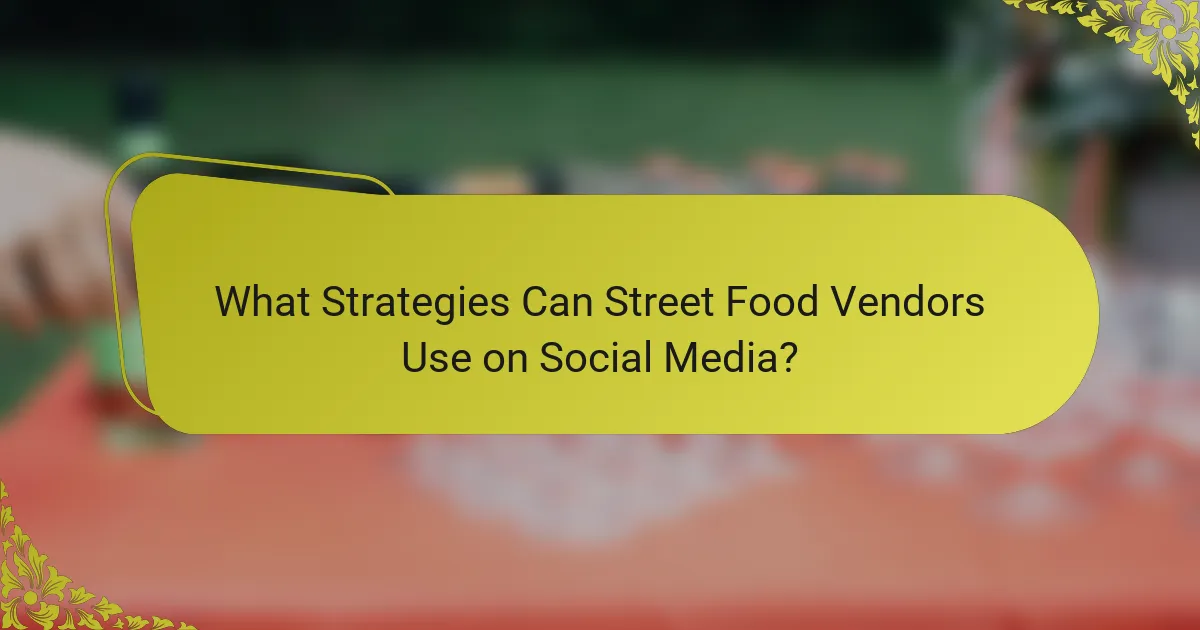Social media has revolutionized the street food industry by boosting visibility and enabling direct interaction between vendors and customers. Platforms like Instagram and TikTok allow street food businesses to showcase their unique offerings, engage with a wider audience, and ultimately drive sales, leading to remarkable success stories in this vibrant culinary sector.

How Has Social Media Transformed Street Food Businesses?
Social media has significantly changed street food businesses by enhancing their visibility, customer interaction, and overall profitability. Platforms like Instagram and Facebook allow vendors to showcase their offerings, engage with customers, and build a loyal following.
Increased visibility and reach
Social media platforms provide street food vendors with a powerful tool to increase their visibility and reach a broader audience. By sharing appealing images and videos of their dishes, vendors can attract potential customers who may not have discovered them otherwise.
Utilizing hashtags and location tags can further amplify their presence, making it easier for food enthusiasts to find them. For instance, a vendor in New York can use tags like #NYCFood or #StreetEatsNYC to connect with local foodies.
Enhanced customer engagement
Engagement with customers is crucial for street food businesses, and social media facilitates this interaction effectively. Vendors can respond to comments, share customer reviews, and even conduct polls to understand preferences better.
Regularly posting updates and engaging content keeps the audience interested and encourages them to visit in person. For example, a vendor might share behind-the-scenes content or ask followers to vote on new menu items, fostering a sense of community.
Boosted sales and revenue
Social media can lead to increased sales and revenue for street food vendors by driving foot traffic to their locations. Promotions shared on these platforms, such as limited-time offers or discounts, can entice customers to make a purchase.
Additionally, showcasing popular dishes can create a sense of urgency, encouraging customers to visit before items sell out. Vendors who effectively leverage social media often see a noticeable uptick in sales, especially during peak dining times.
Facilitated brand storytelling
Brand storytelling is essential for street food vendors to differentiate themselves in a competitive market. Social media allows them to share their unique stories, such as their culinary journey, sourcing of ingredients, or cultural influences behind their dishes.
By crafting a compelling narrative, vendors can connect emotionally with their audience, making their brand more relatable and memorable. This connection can lead to increased loyalty and repeat business.
Improved customer feedback mechanisms
Social media provides street food vendors with immediate access to customer feedback, which is vital for improving their offerings. Customers can share their experiences, suggestions, and critiques directly through comments or reviews.
Vendors should actively monitor this feedback and respond appropriately, showing that they value customer opinions. This responsiveness can enhance customer satisfaction and lead to better service and product offerings over time.

What Are Successful Examples of Street Food Brands on Social Media?
Successful street food brands leverage social media to enhance visibility, engage with customers, and drive sales. These brands utilize platforms like Instagram, Facebook, and TikTok to showcase their unique offerings and connect with a broader audience.
Food Truck Revolution in Los Angeles
Los Angeles has seen a significant rise in food trucks, many of which have successfully utilized social media to build their brands. By posting vibrant images of their dishes and sharing customer experiences, these trucks create a strong online presence that attracts food enthusiasts.
Popular food trucks often engage their followers with regular updates on locations, menu changes, and special promotions. Utilizing hashtags effectively can help these brands reach a wider audience and tap into local food trends.
Hawker Chan’s Global Expansion
Hawker Chan, known for its Michelin-starred street food, has effectively used social media to expand its brand internationally. By sharing mouth-watering images and videos of its signature soy sauce chicken, the brand has captured the attention of food lovers worldwide.
Engagement through social media allows Hawker Chan to maintain a connection with its customers, promoting new locations and menu items. This strategy not only drives foot traffic but also builds a loyal customer base across different countries.
Salt Bae’s Viral Fame
Salt Bae, the persona of Nusret Gökçe, became a global sensation through viral social media content showcasing his unique seasoning technique. His flamboyant style and engaging videos have turned a simple act of sprinkling salt into a cultural phenomenon.
By capitalizing on his viral fame, Salt Bae expanded his restaurant chain, attracting customers eager to experience the brand firsthand. His social media presence emphasizes the importance of personality and storytelling in building a street food brand.
Jamaican Jerk Chicken’s Instagram Growth
Jamaican jerk chicken vendors have harnessed Instagram’s visual platform to showcase their vibrant dishes and cultural heritage. High-quality photos and engaging captions help these vendors attract followers who appreciate authentic Caribbean cuisine.
By using location tags and relevant hashtags, these vendors can reach potential customers in their area. Regularly sharing customer testimonials and behind-the-scenes content can further enhance their online engagement and drive sales.

Which Social Media Platforms Are Most Effective for Street Food?
Instagram, Facebook, TikTok, and Twitter each offer unique advantages for promoting street food. Choosing the right platform depends on your marketing goals, target audience, and the type of content you want to share.
Instagram for visual storytelling
Instagram excels at visual storytelling, making it ideal for street food vendors who want to showcase their dishes. High-quality images and engaging videos can attract attention and entice potential customers.
Utilize features like Stories and Reels to share behind-the-scenes content, cooking processes, or customer testimonials. Consistent posting and using relevant hashtags can significantly increase your visibility.
Facebook for community building
Facebook is effective for building a community around your street food business. Creating a dedicated page allows you to share updates, engage with customers, and foster loyalty.
Consider hosting events, sharing customer photos, or creating polls to encourage interaction. Facebook Groups can also be a great way to connect with local food enthusiasts and gather feedback.
TikTok for viral marketing
TikTok is a powerful platform for viral marketing, especially among younger audiences. Creative and entertaining short videos can quickly capture attention and spread your brand’s message.
Focus on trends, challenges, or unique cooking techniques to engage viewers. Collaborating with popular TikTok creators can also amplify your reach and attract new customers.
Twitter for real-time engagement
Twitter is ideal for real-time engagement and updates, allowing street food vendors to connect with their audience instantly. Sharing quick updates about menu changes, special offers, or location changes can keep customers informed.
Utilize hashtags and participate in local food conversations to increase your visibility. Engaging with customers through replies and retweets can also enhance your brand’s presence on the platform.

What Strategies Can Street Food Vendors Use on Social Media?
Street food vendors can effectively leverage social media by focusing on engaging content, building partnerships with influencers, and actively interacting with their audience. These strategies can help enhance visibility, attract customers, and foster community engagement.
Content creation and curation
Creating and curating content is essential for street food vendors to showcase their offerings and unique stories. High-quality images and videos of food preparation, customer interactions, and vibrant market scenes can draw attention and create an appealing online presence.
Vendors should consider posting regularly, using a mix of promotional posts, behind-the-scenes content, and customer testimonials. Engaging captions and relevant hashtags can further increase reach and encourage user interaction.
Influencer partnerships
Partnering with local influencers can significantly boost a street food vendor’s visibility. Influencers can introduce the vendor to their followers, providing authentic endorsements that resonate with potential customers.
When selecting influencers, vendors should look for individuals whose audience aligns with their target market. Offering free meals or exclusive deals in exchange for reviews or social media mentions can be an effective way to initiate these partnerships.
